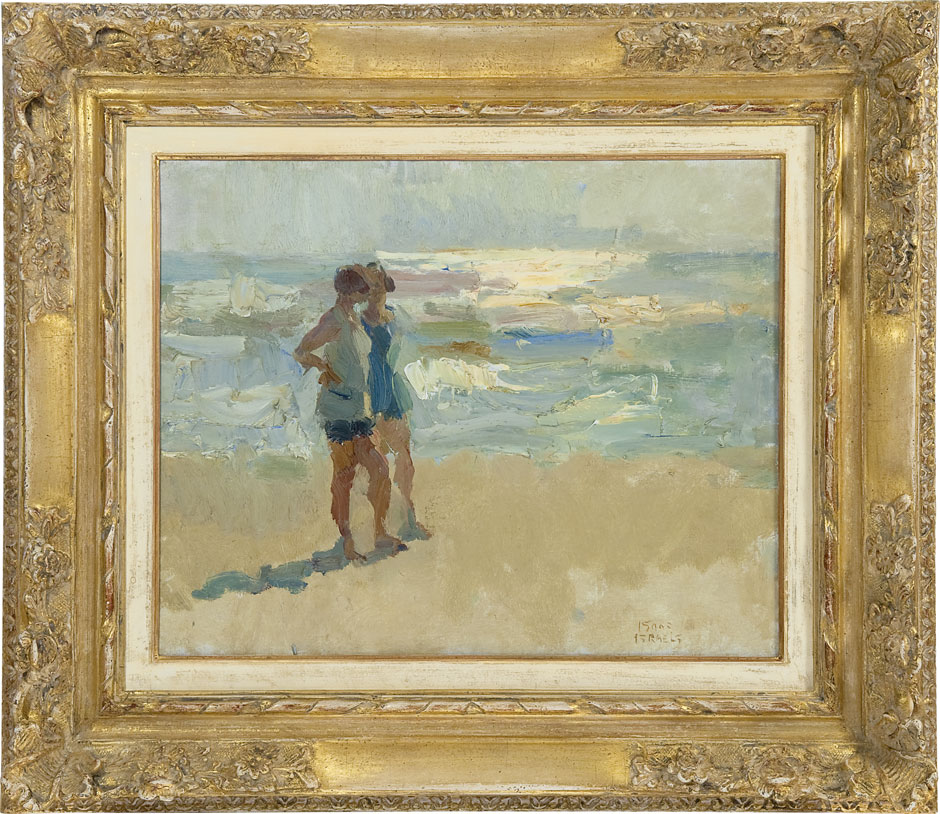Varnish protects the layer of paint, and old varnish especially tends to turn yellow with age, to lose its elasticity, turn cloudy or form craquelure. In such cases, the layer of varnish is carefully removed. Doing so first involves removing surface dirt, such as dust, nicotine and soot from cigarettes, candles and open fires. After a thorough clean, the original, fresh colours of the paintwork will once again be visible.
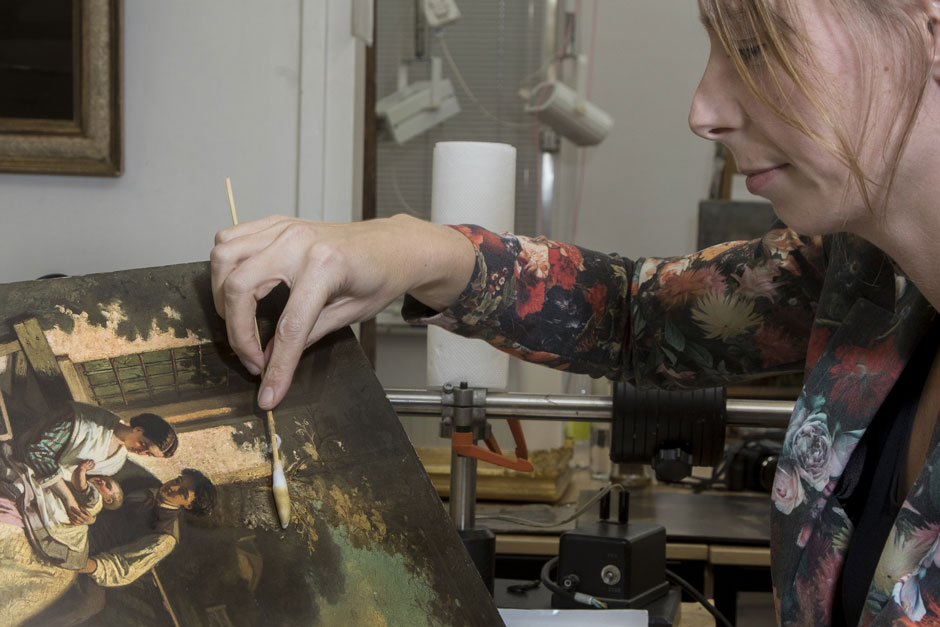
Canvasses lose tension over time, and retensioning returns the canvas to its original tension. If necessary, the canvas is removed from the stretcher and fully remounted.
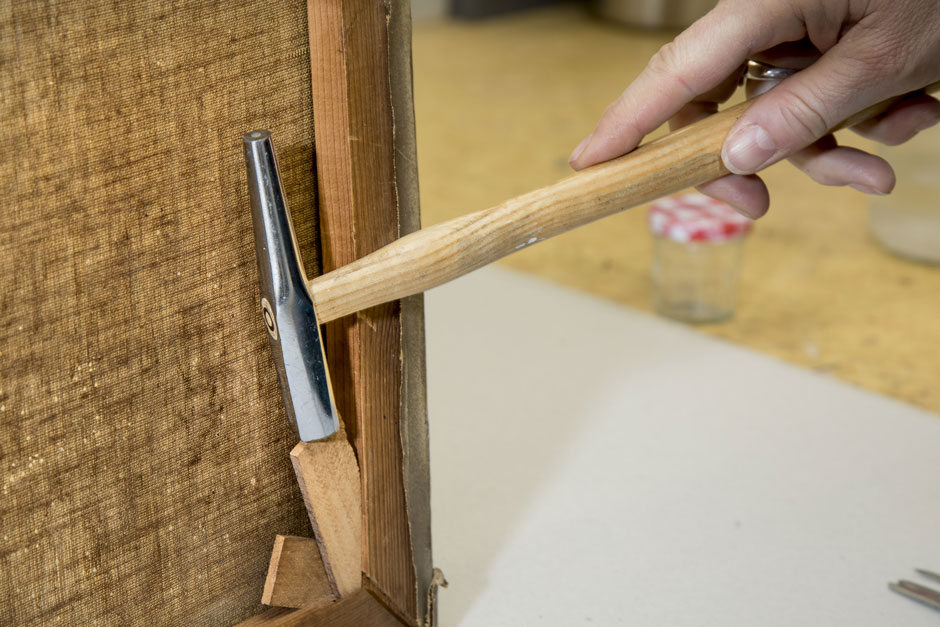
After cleaning – which sometimes removes previous restoration work – the entire painting is covered in retouch varnish. The new retouches can then be ‘inpainted’ and a final varnish is applied to the entire canvas, making the painting ready for many more years of proud display.
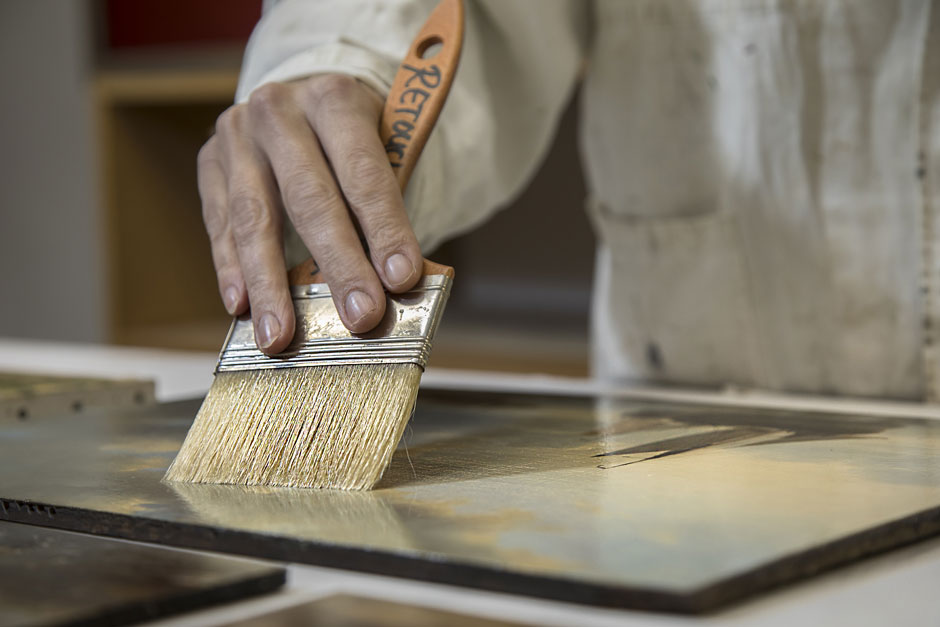
Age, a dry atmosphere or other circumstances can cause cracks to appear in the layers of paint or varnish. Small pieces of paint that dislodge as a result are re-affixed using a special glue and controlled heat, before removing the surface dirt and varnish.
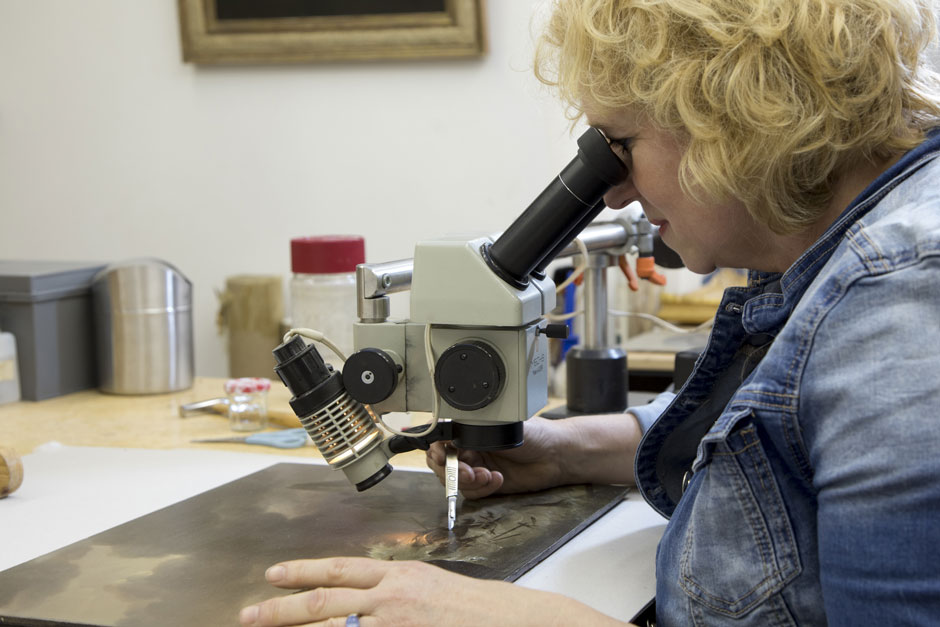
Various methods are used to fix rips. Usually the edges are laid together so that the threads of the canvas align properly, then the ends of each thread are rejoined by forming a ‘bridge’ of threads attached to the canvas one by one using glue and a warm soldering iron.
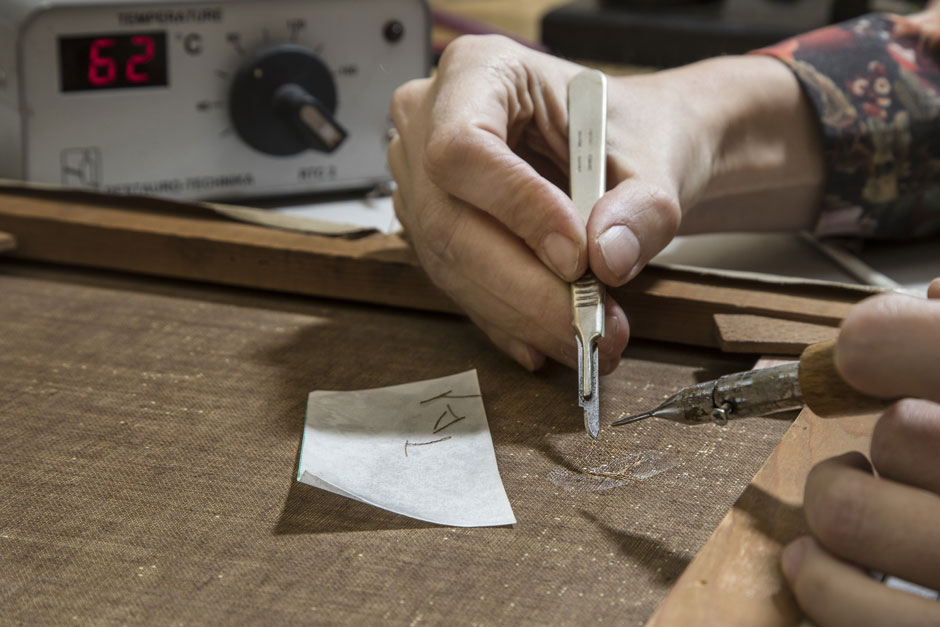
Fabric intarsia is a way of repairing tears by replacing the missing pieces with additional fabric, and using the method above to attach it to the canvas. The material used must approximate the texture of the original as closely as possible. To repair major damage, the lining method is used.

Lining involves using a special adhesive to attach a layer of supporting fabric to the back of the original. This method is used if the canvas no longer provides enough support to the layer of paint, or if the damage is so severe that treatments such as the consolidation method above are no longer possible.
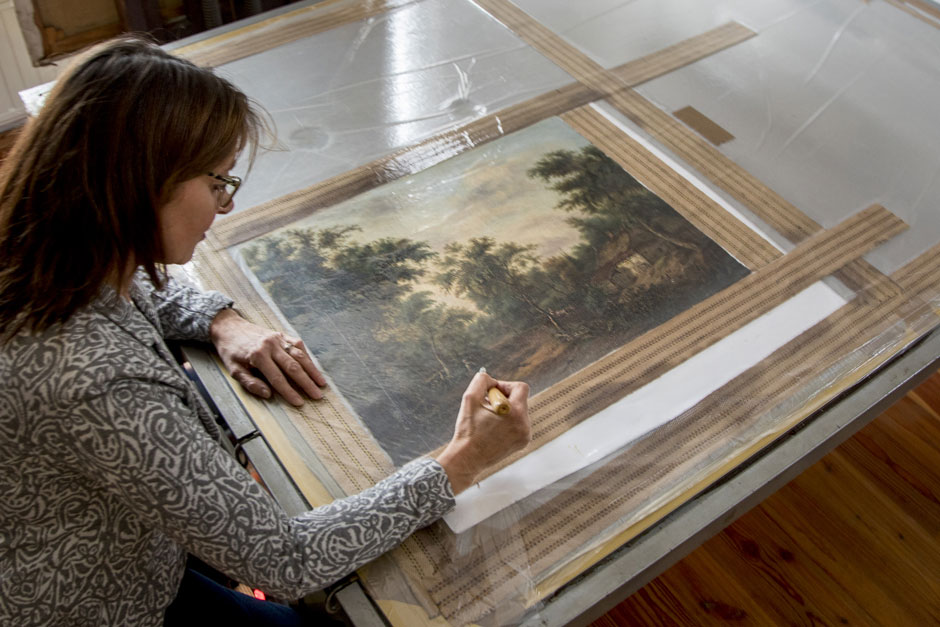
Edge backing is applied if the edges of the canvas that are attached to the frame are no longer strong enough to maintain proper tension. In these cases, the four edges of the fabric are strengthened by attaching strips of supporting fabric, after which they are nailed to the frame.
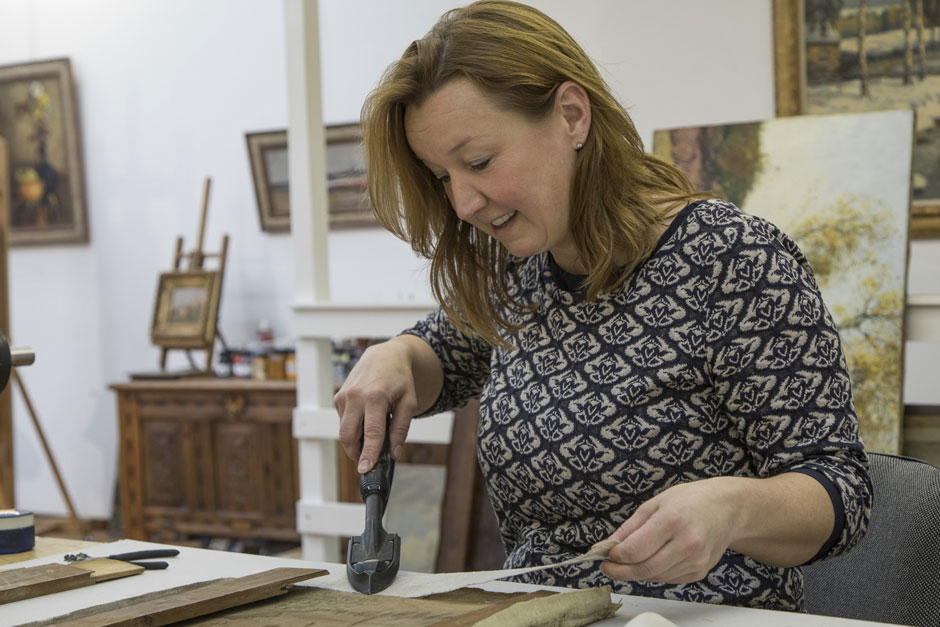
Retouching involves the reapplication of colour to (often small) areas where the original paint has disappeared. They are applied on top of a retouching varnish, so they are not in contact with the original paint layer. Retouches must always be reversible, i.e. it must always be possible to remove them again. After drying, a layer of final varnish is applied.
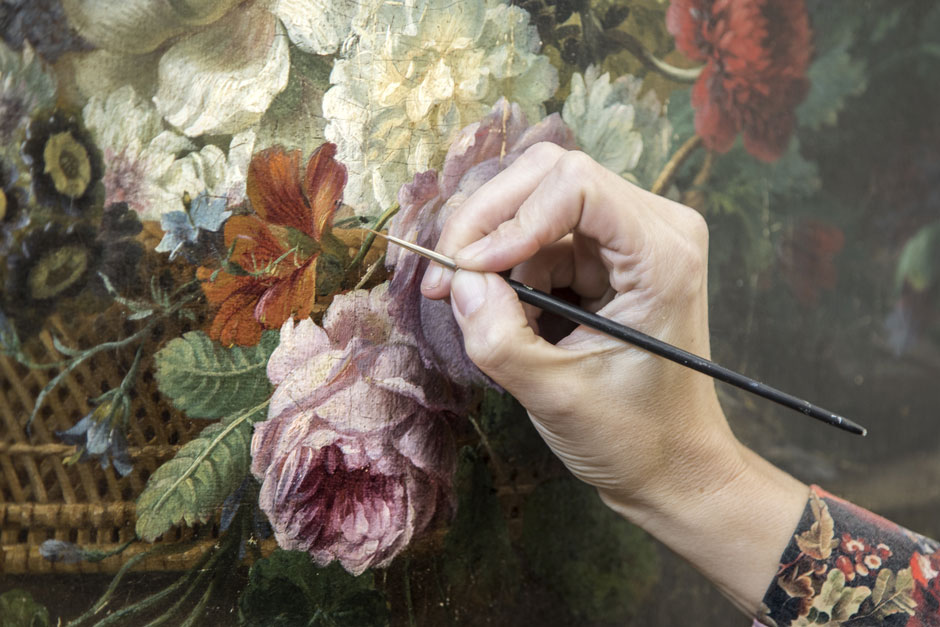
This technique involves filling in holes or large tears in the paint layer with an elastic material. It is often applied when relief techniques have been used in the layer of paint on the canvas or panel. After the infill has dried, retouches and then the final varnish are applied.
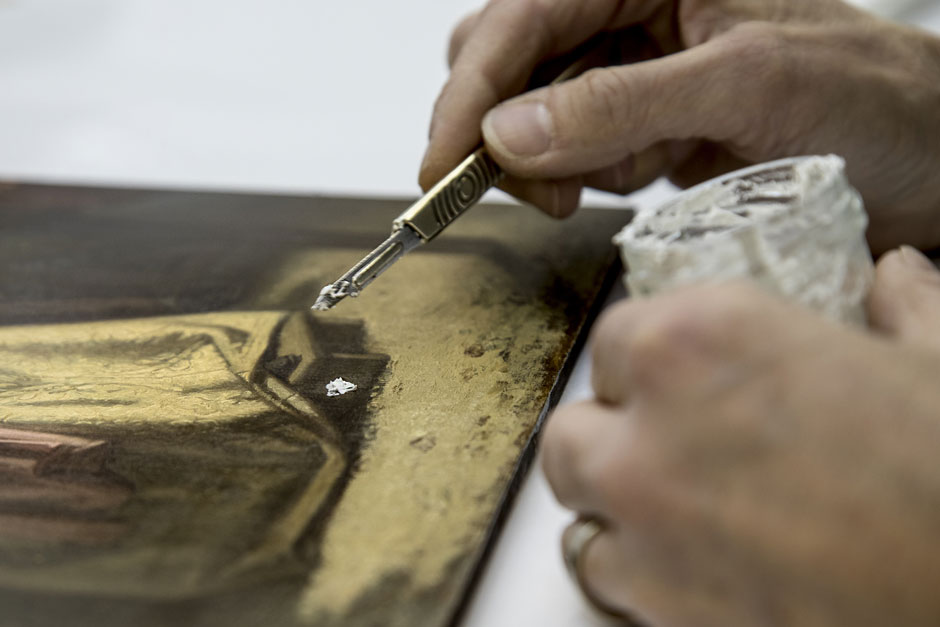
Every painting that enters our studio is first thoroughly examined and discussed by the restorers, after which a written record is made of the details of the painting. An action plan is then drawn up in consultation with the owner. Throughout this process, our restorers follow the Code of Ethics and the Quality Charter established by Vereniging Restauratoren Nederland (the association for professional restorers in the Netherlands), and work using only state-of-the-art restoration techniques.
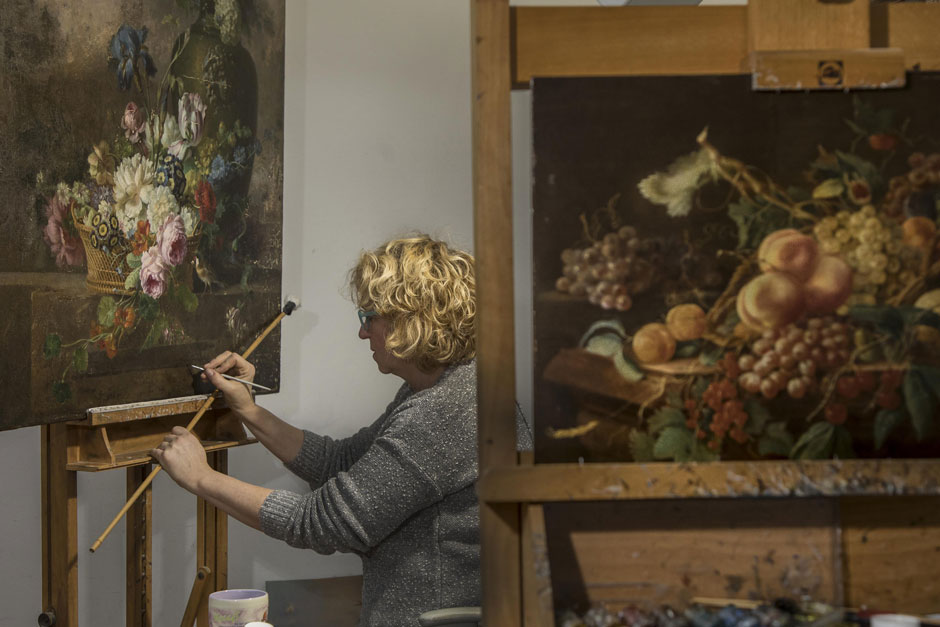
The frame is an important part of any painting: it prevents the stretcher from buckling, and accentuates the character of the artwork. We offer facilitation and advisory services when choosing a new frame. In special cases, we can facilitate the restoration of the existing frame. Our regular framer is Gehring & Heijdenrijk in Amstelveen.
